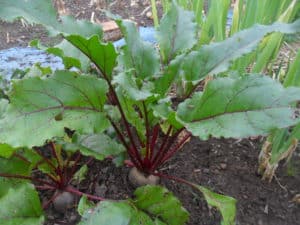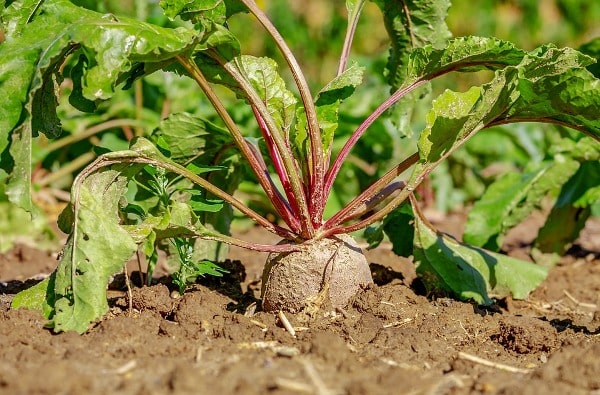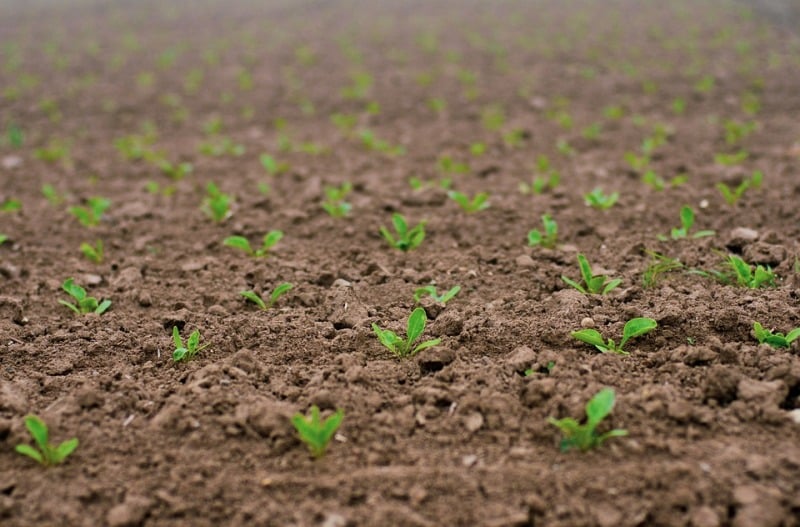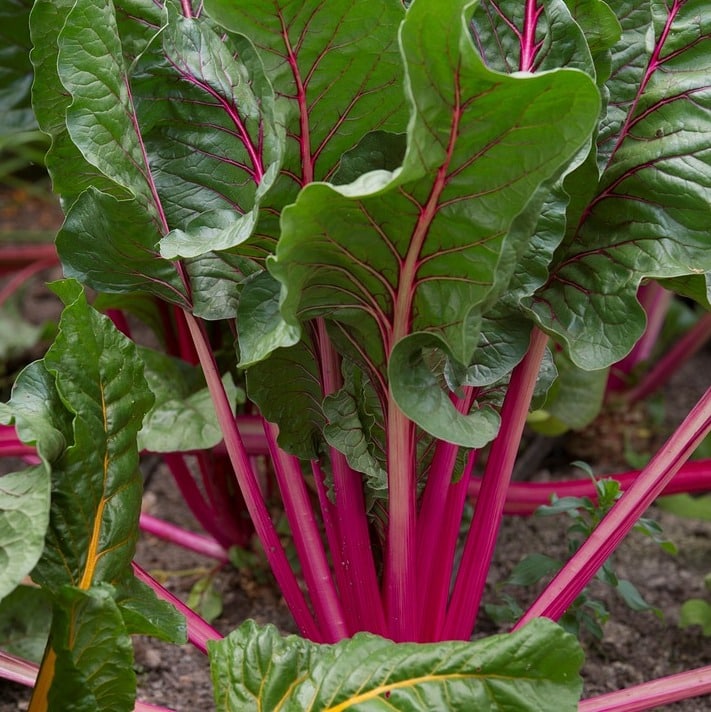A step by step guide for Beetroot farming, Plantation:
Today, we are going to explain Beetroot Farming techniques, tips and ideas, and its cultivation practices. You can implement the same techniques for growing Beetroot on the terrace, backyard, indoor, and home garden.

Introduction:
Beetroot is also known as garden beet which is a sweet, healthy vegetable loaded with antioxidants. It’s actually these antioxidants, packed inside beetroot’s red pigments, that contain cancer-preventing and heart-protecting properties. Beetroot is generally easy to grow and is consistently ranked as one of the top 10 vegetables grown in India.
Other languages names of Beetroot:
Bita gacha (Bengali),
Cuqandar (Hindi),
Salada (Gujarati),
Gajarugadde (Kannada),
Bit (Malayalam),
Bita (Marathi),
Beet (Punjabi),
Carkkarai vali kilanku ceti (Tamil),
Dumpamokka (Telegu).
Beetroot varieties recommended for cultivation in India:
1. Detroit Dark Red: Roots are perfectly sound with smooth, uniform and deep red skin. The flesh is dark blood red with light red zoning, top medium to tall, large bright green leaves with maroon shades. It is a heavy cropper.
2. Crimson Globe: The roots are globular to a flattened globe, medium red with little shoulders. The flesh is medium dark red with indistinct zones. The top is medium to tall with large, bright green leaves having maroon shade. This is best for heavy yielding.
3. Crosby Egyptian: Roots are a flat globe with a small taproot and a smooth exterior. The internal color is dark purplish red with some indistinct zoning. The top is medium tall, green with red veins. This variety reaches maturity in 55 -60 days after sowing. White zoning is present when it is grown in warm weather.
4. Early Wonder: The roots are flattened globe having rounded shoulders with smooth and dark red skin. The interior is dark red with some lighter red-zoning. The top is heavy green with red veins. This variety takes about 55-60 days to reach harvest maturity.

The climatic requirement for Beetroot production:
Beetroot grows best under cool conditions and can be grown successfully almost all year round. Crops grown in cool weather produce superior quality roots (with high sugar content and dark internal color), though plant growth slows under prolonged cold conditions. Beetroot has a fair tolerance to moderate frosts at all growth stages. It grows well in warm weather but attains best color, texture, and quality in cool weather conditions. Excessive hot weather, however, causes zoning, the condition which is characterized by the appearance of alternating light and dark red concentric circles in the root. It has been reported that roots developed at a relatively high temperature have poor color, while those planted in cooler months have excellent color and quality.
You may be interested in the Advantages of Biofertilizer.
Soil requirement for Beetroot plantation:
Garden beets are produced on a wide variety of soils but deep, well-drained loams and sandy loams are considered the best. Heavy soils are not satisfactory for beets because the roots are likely to be unsymmetrical in shape when grown on such soils. A pH range between 6.3 and 7.5 is most appropriate for cultivation of beetroot. Beetroot likes neutral, moist, fertile soil without too much lime or acidity. The soil should be soft and not have too much clay or too much sand; however, since the root develops at the surface, clay soil can be tolerated if the top has been loosened by the addition of lots of well-rotted organic matter(don’t add this unless the soil has much clay).

Propagation of Beetroot:
Propagation in beetroot farming process is done mainly through seeds. Seeds of beetroot can be sown about 1.5 cm deep leaving a distance of about 7cm in between. The space between the rows must be 30 to 40 cm. Mid-April- Mid July is the ideal time for sowing though it may vary with climatic conditions of different regions. Beetroot should be grown quickly if growth is checked, the edible roots become tough and indigestible. Watering should be constant but not over the top, and gentle hoeing will keep the weeds away. In dry conditions thorough watering is necessary. The seedlings will appear in about 15 days, depending on the weather. When the seedlings are about 3 to 5 cm high, thin them to a spacing of 7 to 10 cm to out so that there is only one seedling in one place. Remove the weakest seedlings, leaving only the strongest for growth. The beetroot takes about 2 months to grow from sowing to maturity. The mature height of the plant is about 9 cm.
Read: Stevia Cultivation Training In India.
Planting, Spacing, and Sowing of Beetroot:
Like other root crops, beet also requires a well-pulverized soil for its successful cultivation. The field is plowed once by soil turning plow and then 4-5 ploughings are done by desi plow. Each plowing is followed by planking to crush the clods.

Garden beet is primarily a cool season crop but grows well in warm weather and hence can be grown during winter all over the plains. The time of sowing of garden beet is slightly later than that of carrot or turnip. As a matter of fact, all these root crops are sown at the same time during the winter. Generally, sowing of the beet can be done any time from August to November. In some parts like Bangalore, it is sown during June-July also. On the hills, sowing, time is from the end of February to the end of May. Like other root crops, it is also preferred to be sown on ridges by keeping the row to row distance 30 to 40 cm and plant to plant about 15 -25 cm. It requires about 10 -14 kg of seed to sow one-hectare .of area. The seed is sown 2 -3 cm deep in the soil and irrigated immediately after sowing in light soils.
At some places, the seeds are soaked for about 12 hours before sowing to facilitate better germination in the field. The seedlings come up in the bunches since each seed is sown is really a fruit containing 2-6 seeds. Only one plant should be allowed to grow in each clump.
Fertilizer requirement of Beetroot:
Water requirement for growing Beetroot:

You may also check the Urban Farming Techniques.
Beginning, your seeds need plenty of water to start the germination process. The roots will take moisture from the soil once they’re established.
- That being said, avoid over-watering. This causes beetroot to produce more leaves and less root, risking them “bolting” (flowering and not producing a vegetable). What’s more, under-watering creates woody roots.
- Once they have sprouted, only water them every 10-14 days in dry spells. Other than when the weather is unnaturally dry, normal rainfall should be fine. Again, irrigation depending on soil type as well.
Intercultural operations and weed control of Beetroot crop:
Weeds drastically decrease beet yield and, therefore, they should be controlled in beetroot farming. Hand weeding is usually practiced in India, whereas in advanced countries mechanical cultivation is commonly employed to control weeds between rows, and herbicides are used within the rows. Clean and shallow hoeing is frequently done to check the weeds. Deep cultivation in standing crop should be avoided as it may damage the crop. One or two earthing is also required. Care should also be taken to see that young seedlings are provided proper spacing between the rows by thinning the excess seedlings.
Pests and diseases of Beetroot:
Beetroot is relatively free from pests and diseases. In Beetroot Farming, leaf spot is the most common disease in Beetroot Farming, causing a conspicuous spotting which is very easily recognized. The disease is favored by warm, wet conditions. Rotating crops, allowing 2 to 3 years between planting beetroot in the same garden bed, will help to suppress the leaf spot. Root-knot nematodes cause galls or swellings on the roots. Heavily infested plants are usually stunted, with the main root malformed. Removing the affected leaf parts as soon as the damage is seen, burning them, isolating the affected plant and treating lightly with diluted insecticides and fungicides goes a long way in checking the damaging effects of diseases and pests. Contact your nearest agriculture research department for pest and disease control in Beetroot Farming.
Read: Ideas for Balcony Vegetable Gardening.
Harvesting and storing of Beetroot:
Harvesting of beetroot can begin around nine weeks after sowing the seed. At this stage, the bulbs will be about 2.5cm (1in) in diameter and they will be at their most tender – important for salads. These first pickings should be evenly applied over the growing area to give the remaining beetroot good room to grow larger.

Continue to harvest as required until the beetroot reach about 8 cm (3 inches) in diameter. At this point, it is best to harvest all the beetroot and store them. If they are left in the ground much longer, they will become woody and not taste so good. Another sign that the roots are ready for harvest is when the foliage starts to go limp. Beets are harvested as they attain a diameter of 3-5 cm. They are usually pulled by hands, the tops are removed and after washing the roots are graded according to size. In advanced countries, the mature roots are mechanically harvested, de topped, washed, graded and finally packed in polythene bags. Removal of tops and packing in polythene bags lengthens the shelf-life of beets by reducing water loss during transit and storage. Small sized bunched beets are also in great demand in some countries. Hence, after harvesting by hand the dead and injured leaves are removed and then tied in bunches of 4-6 beets with their tops on. Oversized beets are not in demand, because they are tough and woody and cracks appear on the surface.
The yield of Beetroot:
The average yield of the beet varies from 250 quintals to 300 quintals per hectare. Yield in Beetroot Farming depends on the type of seed and other factors.

Some facts about growing Beetroot:
- It is advised to sow the beetroot seeds 3 weeks before the last frost date in spring.
- Beets take 50 to 60 days to be harvested.
- Beetroot plants require a sunny location with a soil rich in organic matter.
- Beetroots can be grown in pots/container/raised beds.
- For faster germination, soak the Beetroot seeds in water for 24 hours before planting.
- The reason for the poor development of beets is phosphorus and high nitrogen soil causes to grow the top greener leaves but not the root.
To increase the phosphorus content, you add some bone meal to the soil. - Beetroot seeds take up to 2 weeks for germination.
- If the Beetroot leaves are turning yellow, meaning the there is a nutrient deficiency in the soil.
The bottom line of growing Beetroot:
Beetroot can be grown in your backyard as well as a commercial crop. Good profits are possible in Beetroot farming due to demand in the Indian market for its health benefits.
You may be interested in Growing Basil from Cuttings, Seeds.
Great job Mr. Jagadish Reddy….. Sharing of knowledge is a great gift you are providing to the required farmers. you are utilising your professional expertise and making very useful information to other interested farmers…. great efforts… very well done.
thanks a lot
Regards
P S Rao
Thank you for the information,it will help me when writing my agriculture project
We are glad that it helped you!
Good work Jagadish, valuable information for Farming Community.
But i found the amount of seed info is not correct for so many crops in this site. Could you update with correct details.
Thank you,
Upendra V
Great job sir
A big dhaniavaad on your very helpful presentation. Just a point I need clarifications on. Sowing depths are 1.5cm earlier on and between 2 and 3 afterwards. Is this because of the ridging option in sowing preparations?
Thanking you in advance.
Very insightful! Thank you.